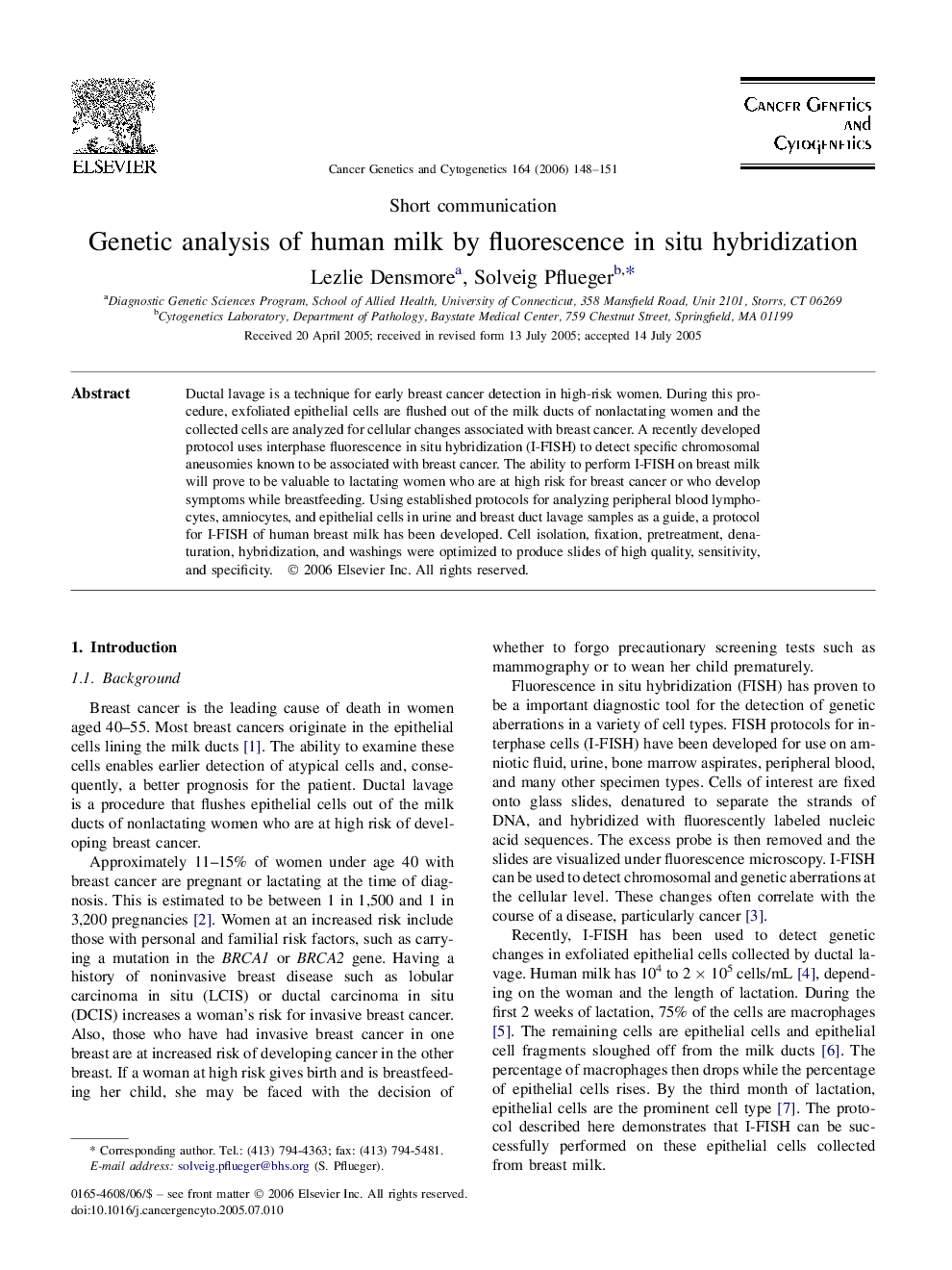| کد مقاله | کد نشریه | سال انتشار | مقاله انگلیسی | نسخه تمام متن |
|---|---|---|---|---|
| 2112029 | 1084012 | 2006 | 4 صفحه PDF | دانلود رایگان |

Ductal lavage is a technique for early breast cancer detection in high-risk women. During this procedure, exfoliated epithelial cells are flushed out of the milk ducts of nonlactating women and the collected cells are analyzed for cellular changes associated with breast cancer. A recently developed protocol uses interphase fluorescence in situ hybridization (I-FISH) to detect specific chromosomal aneusomies known to be associated with breast cancer. The ability to perform I-FISH on breast milk will prove to be valuable to lactating women who are at high risk for breast cancer or who develop symptoms while breastfeeding. Using established protocols for analyzing peripheral blood lymphocytes, amniocytes, and epithelial cells in urine and breast duct lavage samples as a guide, a protocol for I-FISH of human breast milk has been developed. Cell isolation, fixation, pretreatment, denaturation, hybridization, and washings were optimized to produce slides of high quality, sensitivity, and specificity.
Journal: Cancer Genetics and Cytogenetics - Volume 164, Issue 2, 15 January 2006, Pages 148–151